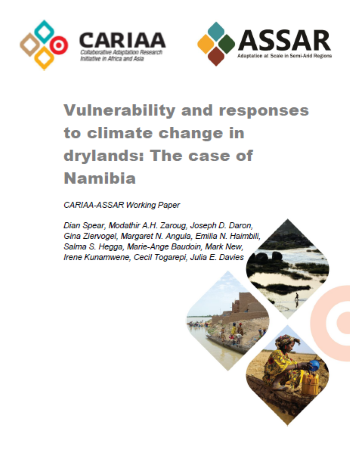Vulnerability and responses to climate change in drylands: The case of Namibia

Drylands are harsh environments exposed to substantial climate variability and change. Historically, communities have adopted several coping mechanisms. Today, however, many communities exhibit low levels of adaptive capacity due to challenges such as marginalisation, underdevelopment, maladaptive policies and population growth.
In this ASSAR working paper, the research team uses Namibia as a case study to examine the nature of vulnerability and responses to climate change in a developing dryland country. Vulnerability to climate change in Namibia is driven by underlying structural factors, including a history of inappropriate economic policies, gender disparities and colonisation, which have led to chronic poverty and inequality. Climate change is expected to augment existing levels of vulnerability, as temperatures rise, rainfall decreases and seasonal climate patterns become more variable. Concurrently, the natural characteristics of drylands – including water scarcity, poor soil fertility and remoteness – make communities further vulnerable. Although a number of government-led responses have contributed to reducing the impacts of climate variability on vulnerable communities, these responses are primarily targeted at addressing immediate development needs and are therefore unlikely to be sufficient in the face of long-term climate change. Adaptive and even transformative responses need to be considered and implemented if the wellbeing and livelihoods of the people of Namibia are to be maintained and improved.
|
|
